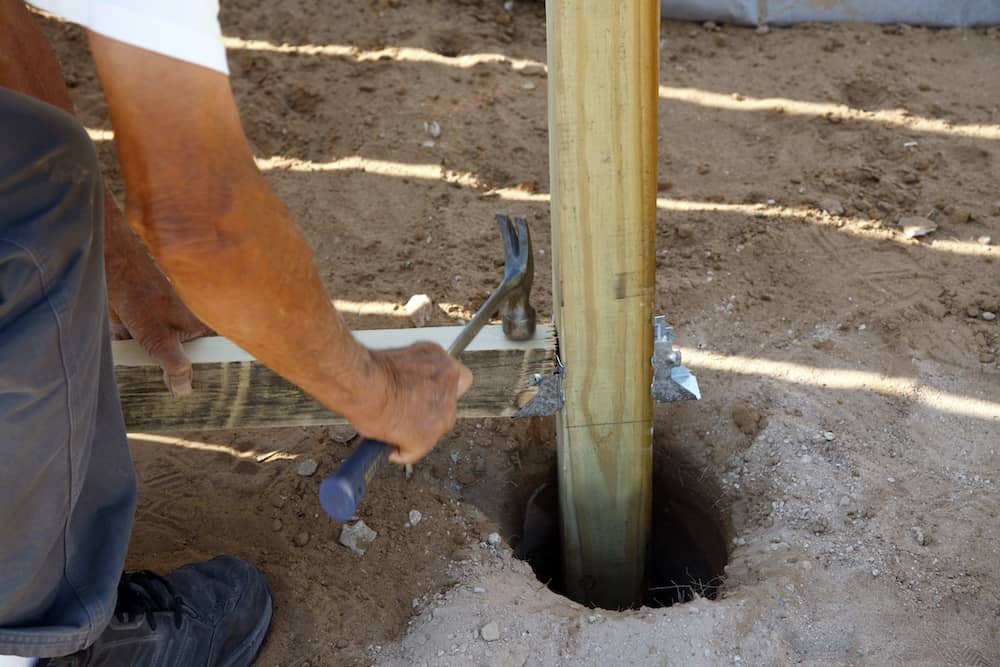Frost heave can cause severe problems for homeowners, especially when setting posts for structures like fences, decks, and sheds. Here’s how to prevent frost heave before it starts.
The problem arises when water freezes in the soil around the posts, causing the ground to expand and push up on the posts. This can result in the posts becoming unstable, leaning, or even breaking, which comprises the structure they are attached to.

Takes these steps to prevent frost heave from affecting your posts and how ensure they remain stable and secure for years to come.
Choose the Right Posts
Choosing the right posts is one of the most important factors in preventing frost heave. Posts made of concrete or treated lumber are generally more resistant to frost heave than those made of other materials, as they do not absorb as much water as traditional lumber.
As a precaution when using pressure-treated lumber, you can encase the base in a Post Protector, which adds an additional level of protection against water and moisture. We recently did this when installing a large retaining wall, and there have been no signs of fence wobble or movement.
Set Posts at the Right Depth
The depth at which you set your posts can also greatly impact how susceptible they are to frost heave. Generally, a post that is six to eight feet high should be set at a depth of at least two feet. It’s also important to check your area’s frost depth to ensure you are setting your posts deep enough so they can be anchored below the frost line.
You should add an extra eight to ten inches of depth so you can add a gravel or crushed stone base which will assist with drainage and prevent water from settling around and under your post. This step is key to preventing frost heave.
Prepare the Soil Properly
The soil around your posts plays a crucial role in determining how susceptible they are to frost heave. Therefore, before you set your posts, it is important to properly prepare the soil by removing any grass or other vegetation that can hold moisture and tamp the soil to prevent it from shifting.
Consider adding an insulation layer of gravel around the posts to help prevent the soil from freezing. The insulation will help keep the ground around the posts warm, reducing the risk of frost heave.
Use the Right Post-Setting Techniques
The techniques that you use to set your posts will also play a role in preventing frost heave. When setting posts, it is important to ensure that they are level and plumb and anchored securely in the ground. If they are already leaning in one direction, they will continue to fall that way.
If you are setting posts in icy areas, it’s also a good idea to use post anchors, which will help prevent the posts from being pushed out of the ground by frost heave. Post anchors work by transferring the structure’s weight to the ground, which helps prevent the posts from becoming unstable. Fence post anchors wrap around the base of your post and function as a large stake at the bottom of your post. These add a ton of stability to your posts.
Maintain Your Posts Regularly
It’s important to maintain your posts regularly to help prevent frost heave from affecting them. This can involve checking the posts periodically for signs of instability and making any necessary repairs.
If you notice that one of your posts has started to lean it’s important to address the problem as soon as possible to prevent it from worsening. You can do this by adding additional supports or by replacing the post entirely if necessary.
Preventing frost heave when setting posts is essential for ensuring that your structures remain stable and secure. By following the steps outlined here, you can protect your posts from the damaging effects of frost heave and ensure that they remain sturdy and reliable for years to come.


